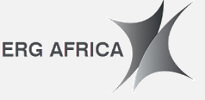Publication: Metal Bulletin
Date: 6 February 2018
Author: Janie Davies
Cobalt’s boom days will continue for the next seven to 10 years amid strong demand from the electric vehicles sector as well as traditional cobalt consumers, according to Eurasian Resources Group’s (ERG) Tony Southgate.
“Our view is that the cobalt boom is guaranteed for the next seven to 10 years,” Southgate, Head of Strategic Cobalt Marketing at the Kazakh mining group, told Metal Bulletin on the sidelines of Mining Indaba in Cape Town on Tuesday February 6.
“It does seem that all the focus is on batteries but legacy cobalt uses are doing really well. Metal demand is very strong and producers are well sold. Late last year, consumers in the alloy industry were trying not to buy cobalt because prices were high and they were waiting for the market to drop. Now they’re realizing they need to buy,” he said.
Metal Bulletin’s benchmark low-grade cobalt price was assessed at $37.25-38.50 per lb on Friday February 2, compared with $35-37 per lb at the end of December and $18-19 per lb a year ago.
The high-grade cobalt price was last at $37.50-38.50 per lb.
Substitution is possible but comes at a cost, Southgate added.
“We are talking to the battery makers and the message we are getting is substitution is possible, you give up certain things; safety, stability and performance,” he said.
Changes to mining taxes in the Democratic Republic of the Congo (DRC) are also expected to push up costs and prices for cobalt.
And Southgate believes growth in cobalt production will continue to be centered on the DRC; where ERG is constructing its Metalkol Roan Tailings & Reclamation (RTR) project.
The RTR project has a target capacity for 70,000 tonnes per year of copper and 14,000 tpy of cobalt, which will eventually be increased to 105,000 tpy copper and 21,000 tpy cobalt.
“Congo is the only place for cobalt investment. If you’re going to get good growth it’s got to be there. In terms of new projects elsewhere, even if 10 of them get off the ground that’s only one RTR. It will happen, but it’s not material to the supply picture,” Southgate told Metal Bulletin.
RTR remains on track to deliver its first copper production in September or October this year, followed by cobalt production one to two months later.
Despite warnings in the market in mid-2017 of new supply from China undermining prices, there has been no such flood of material, according to Southgate.
This is likely due to increased awareness around the distinction between artisanal mining and established production by large producers, meaning the onus is on producers to show that their material is sourced ethically.
“It [cheaper Chinese supply] hasn’t really materialized. There is more awareness of the artisanal distinction. It should be that you prove your material is clean, not that someone proves you’re using artisanal material,” Southgate said.
“Some carmakers have looked at including artisanal material in their purchasing to support communities on the ground, but they’re realizing they may have to rethink their strategy. Traders who bought artisanal material because it was cheap could have ended up with material they can’t sell.”
RTR has been developed as zero artisanal content and will be certified so by auditor Price Waterhouse Cooper.
“We guarantee it with third party certification,” Southgate said.
